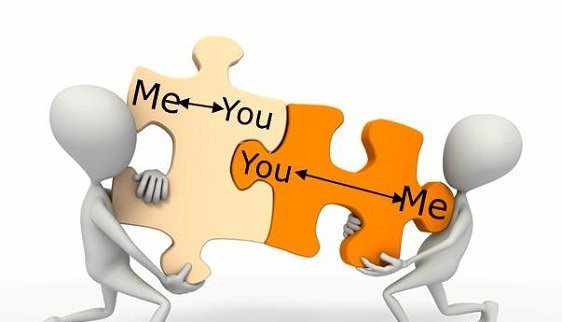Part 3 of the Effective ManagersTM Understanding Accountability Series
In Part 1 of our series on Understanding Accountability we learned that accountability is often not well understood or implemented in organizations, which leads to organizational drift. This lack of clarity of accountability for work priorities often causes strategy execution to fail. As part of our solution, we created a working definition of accountability that is worth repeating:
“Accountability is an obligation for which one can be held to account for one’s results and one’s actions by a specified other.”
In Part 2 of the series, we focused on why accountability is so important to effective strategy execution. Our research shows that managers, on average, only spend 55% of their time doing value-added work. What inevitably suffers is that which is most critical to strategy execution: managerial leadership. In the end of the day, it’s all about how work gets done and putting the pieces in place to make sure people are doing the right work.
In this part of the series we will be looking at where accountability comes from and how it flows through an organization. In doing so, we illustrate how greater clarity of accountability can prevent organizational drift.
How accountability evolves in organizations
Understanding where accountability comes from in organizations is best understood using an example of how accountability and authority evolve as organizations mature.
Consider, for example, you decide to start a company. As the sole owner, you have full discretion to run it as you see fit. If someday you sell a portion of your company to an investor, like most people, they will want to have a say over what the company does and how it operates, and may impose conditions to which you and your staff, are bound. If more people invest, they too will want to have a say in the organization and may want to impose their own conditions. Since it’s not practical to have dozens or hundreds of investors all imposing their own conditions or agreeing on a set of policies, everyone who owns a portion of the company instead authorizes a group of industry experts to represent them and oversee their investments. In large organizations, there are often thousands of investors (shareholders) who hold an annual general meeting to elect these industry experts. The group they elect is called the Board of Directors.
The board of directors is given the accountability and authority to govern the organization between meetings. They are accountable for specific tasks which change from organization to organization, but typically include approving the strategic plan, approving the budget, appointing auditors and appointing a CEO. They are accountable to the shareholders to govern the organization’s operations and to over see the work of the senior staff person operate the organization. This is done by hiring and engaging employees. This process is important because, in all organizations, accountability stems from its owners. While the mechanisms vary by sector, the fundamental process is the same for all organizations.
Streams of accountability in organizations
The staff organization can vary widely, from an owner with a few employees, to regional organization with manufacturing, sales and delivery functions, to a global conglomerate with many separate business lines. They all have one thing in common: individuals are accountable for doing good work that contributes to the achievement of the organization’s strategy.
Each front-line worker has obligations for which they are held to account by their manager (the ‘specified other’ in our definition). Each manger in turn has obligations for which they are held to account by their manager, and so on all the way up to the owner, or CEO, who is in turn accountable to the board of directors, who in turn are accountable to the owners. Everyone working in an organization has an obligation to some specified other for their results and actions, and every manager is tasked with holding their direct reports accountable for a portion of that for which they themselves are accountable. It’s also important to understand that one is not absolved of accountability by delegating it to the next level down. Accountability at each level in the organization is within the context of the work that needs to be done at the next level up. A key part of each manager’s job is to determine, from among all their accountabilities, what they must do personally and what they can apportion and delegate to team members.
How does organizational drift occur?
If we think about the organization in terms of accountability, the board of directors is delegated the accountability and authority by the owners to ensure the organization is serving their interests. The board then appoints a CEO, to whom who they delegate the accountability and authority necessary to lead the organization. The CEO must then break up this accountability and authority into smaller chunks which are then delegated to subordinate managers. These managers, in turn delegate even smaller chunks to their direct reports and so on. An important part of each manager’s job is therefore figuring out how to break up the work that they are accountable for into manageable chunks which can then be delegated down the organization.
This is where clarity of accountability becomes so critical because if the CEO is not absolutely clear with her or his subordinate managers, they will apply their own unique filters which will impact how they execute and set priorities. Those in the next level down will naturally do the same and the results will end up being quite different from what was originally intended. We call this organizational drift.
The rampant failure of organizations to successfully execute their strategies teaches us that clarity of accountability is critical at every level of the organization to ensure that everyone is pulling the company in the same direction, reinforcing each other’s work with complete transparency and in a concerted way.
Key takeaway
Your key takeaway: Each individual in your organization has obligations for which they are accountable, but always within the context of the next level up. It is the combined efforts of the team, when combined with the value-added work of the manager, that enable the manager to be successful. Each role at each level of the organization must clearly understand the work for which they are accountable and the authority that they have to do that work.
Preview to the next post
Watch out for our next blog where we’ll discuss how all these chunks of accountability are managed using the Effective Point of Accountability®.
See the Video on our YouTube Channel
Where does accountability come from?
This short video discusses the basis for Accountability in organizations. Organizations with better accountability are more effective. Mangers who are held accountable for their managerial leadership duties can drive higher results.
This video is Part 3 in the Effective ManagersTM Understanding Accountability






